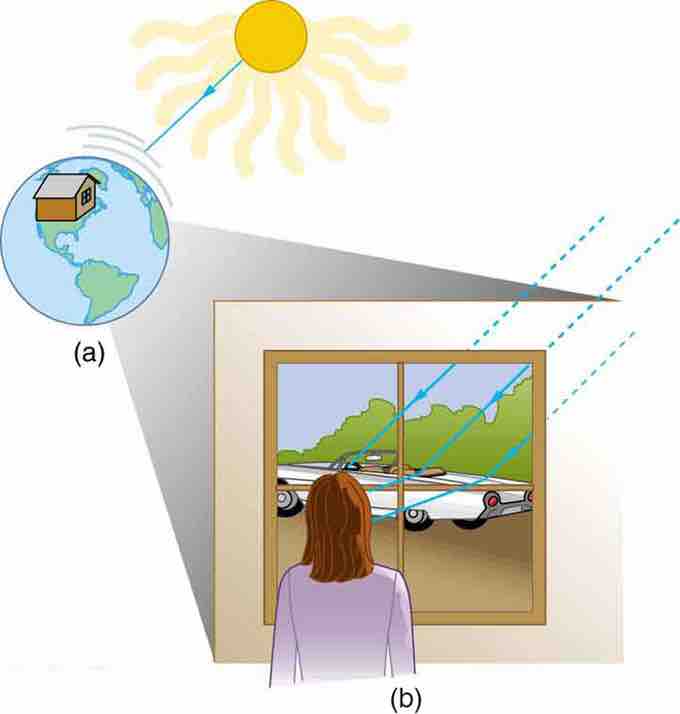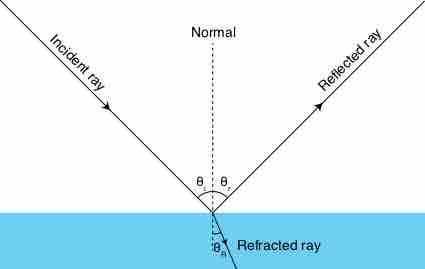Rays, or beams of light, can travel in three ways: directly, through a material, or indirectly (reflection). These three methods of light travel are shown in this image . The word ray comes from mathematics, and refers to a straight line that originates at some point. Even when passing through a material, or bouncing off of a material in a reflection, the light continues to travel in a straight line, even if that line has changed direction. The movement of light, as a ray, can be shown with simple geometry and trigonometry. This is called geometric optics.

Methods of Travel by a Ray of Light
Light can travel through empty space directly from the source, through media like air and glass, reflect from an object like a mirror, or travel in a straight line.
Direct Light Travel
Direct light travel is when a ray of light starts at a source, and continues to travel from that source to its destination without encountering any interference. The light will continue in a straight line or ray until it reaches the observer. An example of this is the light that travels from the sun to the earth.
Light Travel Through a Material
When light travels through any material, air, glass, water, etc., it encounters interference and changes direction. This is only a directional change and will continue in this new path, but still as a straight line, or ray. The law that deals with this change in direction is called the law of refraction. This change in ray direction will depend on the refractive index of the material through which the light is travelling. This concept is what led to the development of lenses and glasses. Have you ever noticed that if you put part of a pencil, spoon, or straw in a bowl of water, the object no longer appears straight, but seems to bend? This is because the index of refraction of the water is different from that of the air. This causes the light rays to change direction .

Refraction of Light Rays
The concept of refraction explains how a pencil submerged in water appears to bend.
Light Bouncing Off a Material
When light is bounced off of a material, such as a mirror, this is called a reflection. This is when a light ray, the incident ray, hits a reflective material and bounces off as the reflected ray at a specific angle. This is called the angle of reflection . Since the movement of the light rays can be shown geometrically, if a mirror is one-half your height, you could see your whole body in the reflection.

Reflected Rays
This diagram shows how light rays reflects off of a surface.